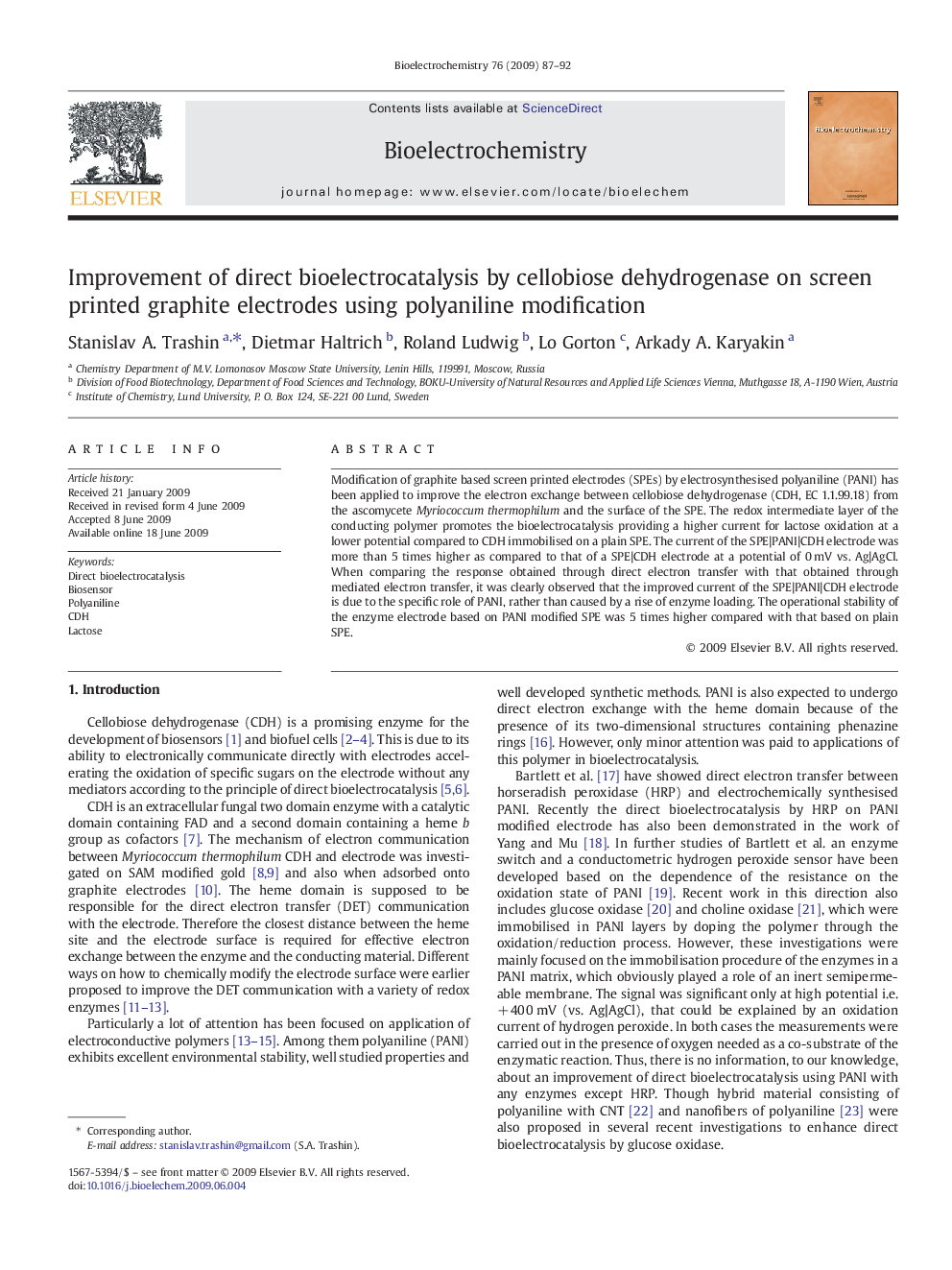| Article ID | Journal | Published Year | Pages | File Type |
|---|---|---|---|---|
| 1275261 | Bioelectrochemistry | 2009 | 6 Pages |
Modification of graphite based screen printed electrodes (SPEs) by electrosynthesised polyaniline (PANI) has been applied to improve the electron exchange between cellobiose dehydrogenase (CDH, EC 1.1.99.18) from the ascomycete Myriococcum thermophilum and the surface of the SPE. The redox intermediate layer of the conducting polymer promotes the bioelectrocatalysis providing a higher current for lactose oxidation at a lower potential compared to CDH immobilised on a plain SPE. The current of the SPE|PANI|CDH electrode was more than 5 times higher as compared to that of a SPE|CDH electrode at a potential of 0 mV vs. Ag|AgCl. When comparing the response obtained through direct electron transfer with that obtained through mediated electron transfer, it was clearly observed that the improved current of the SPE|PANI|CDH electrode is due to the specific role of PANI, rather than caused by a rise of enzyme loading. The operational stability of the enzyme electrode based on PANI modified SPE was 5 times higher compared with that based on plain SPE.
